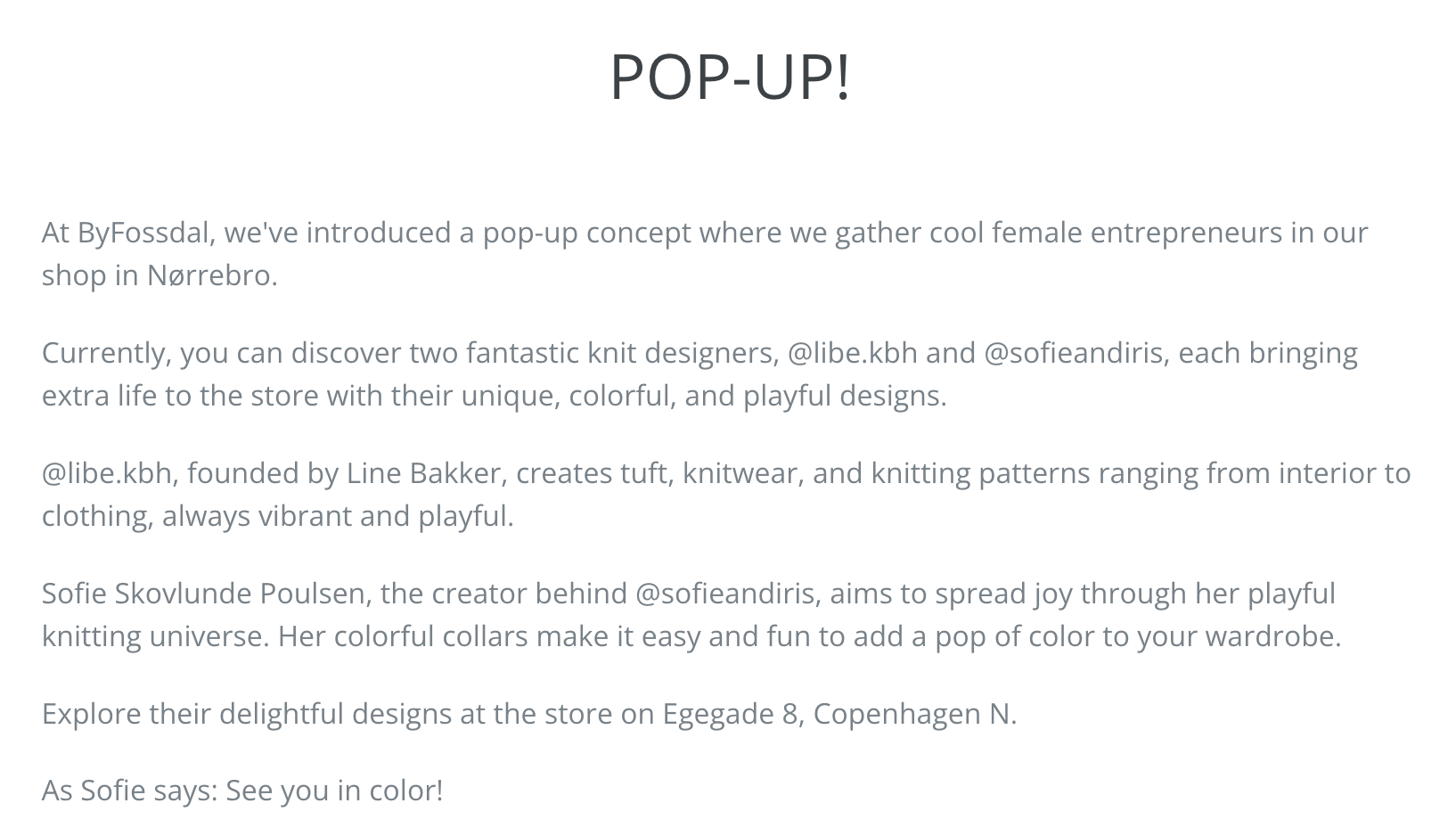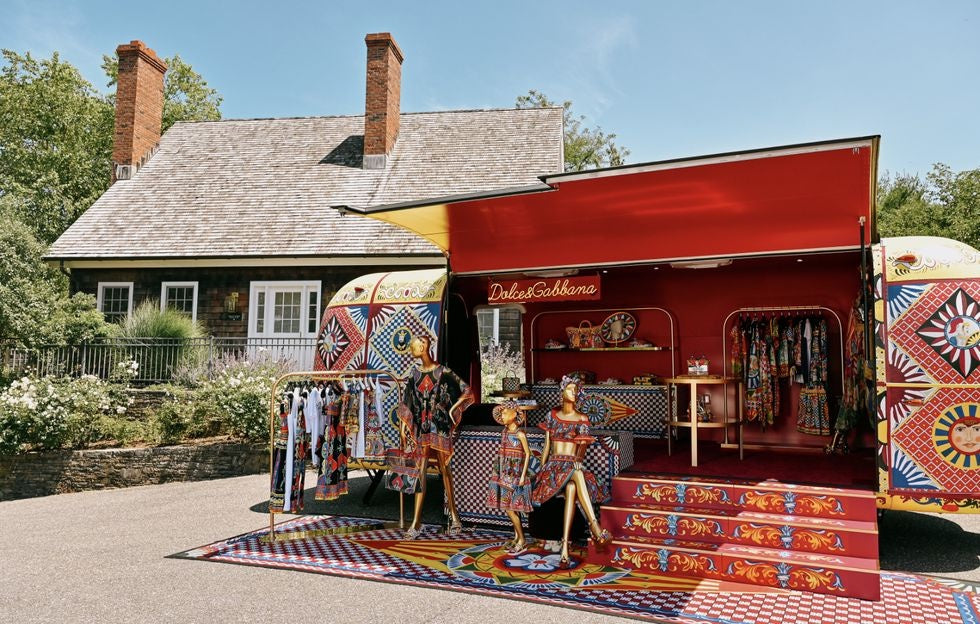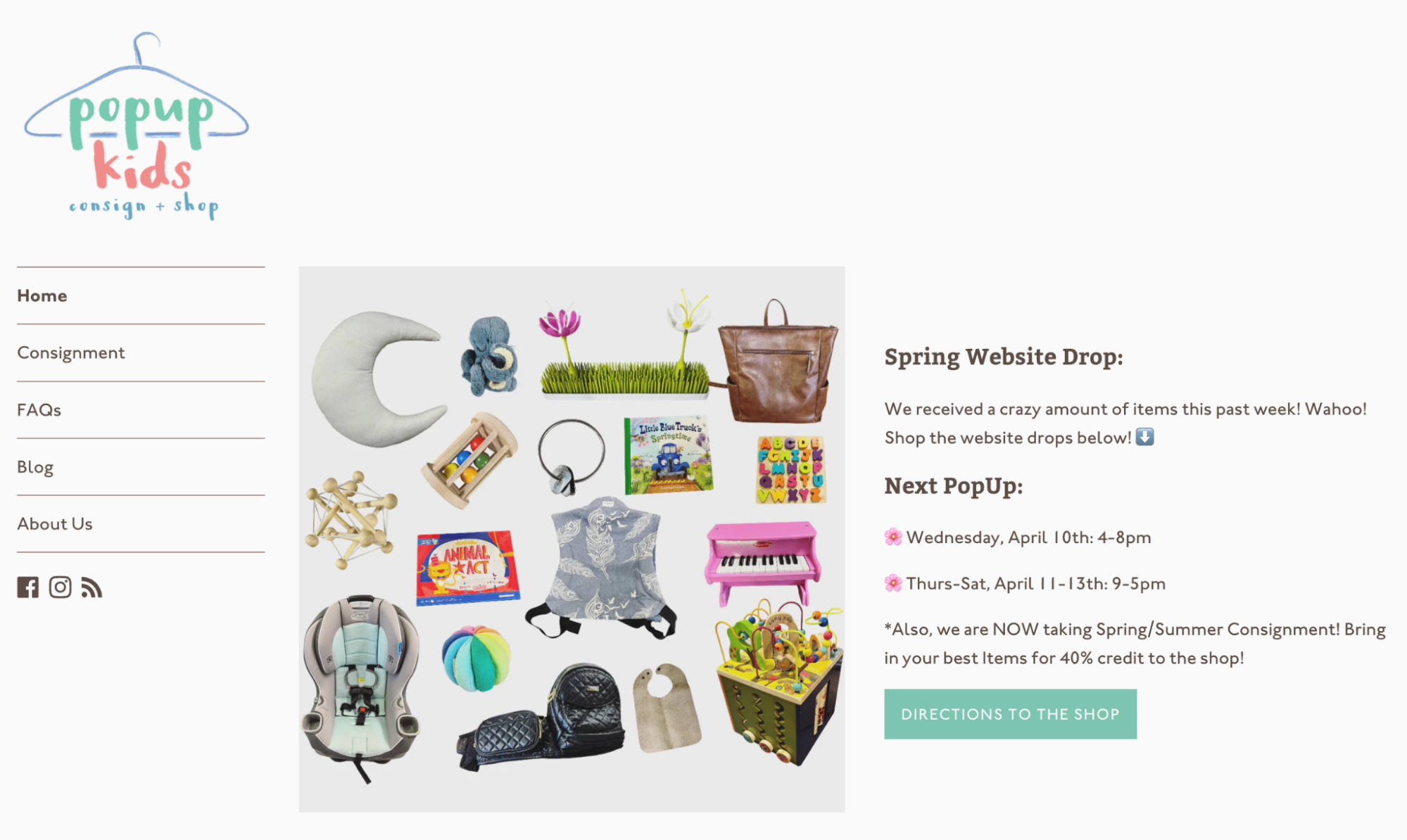Pop-up shops are a great way to introduce your products to new customers. They’re a low-investment business strategy for engaging customers, boosting brand awareness, and gaining valuable feedback.
But coming up with pop-up shop ideas and launching them isn’t straightforward. There are hundreds of moving parts, including choosing a venue, promoting your shop, and evaluating its success.
Sure, there are best practices for running a pop-up shop, but learning from others who’ve hosted successful pop-ups can be helpful as you launch your own.
Check out this list of 19 creative pop-up shop ideas for newbies and veterans alike.
What is a pop-up shop?
A pop-up shop is a temporary in-person retail activation. It gives your customers a chance to interact directly with your products and brand, creating a connection that online platforms often can’t replicate. Pop-up shops can be an effective strategy for engaging with potential and existing customers in real life while boosting sales at the same time.
Why launch a pop-up shop?
There are many reasons why you might consider launching a pop-up shop for your brand:
- Connect with your customers in person. Nothing quite replaces the face-to-face customer relationship. Pop-up shops let you meet and get to know your customers, and fans can put a face with the name through a tangible brand experience. Moreover, at pop-up shops, customers can test products and give real-time feedback on merchandising.
- Test new avenues for your brand. A pop-up shop is a perfect way to experiment with a potential expansion. Warby Parker is an ecommerce eyewear brand that initially tested physical retail through pop-up shops and now has nearly 100 permanent retail locations. Launching a pop-up shop can help you validate demand before you permanently invest in something like a new product line or targeting a new audience. Pop-up shops also let you test pricing, product bundles, and merchandising ideas.
- Build brand buzz. Pop-up shops employ two powerful levers for your business: scarcity and word-of-mouth marketing. The temporary nature of a pop-up encourages customers to stop by and shop. Market both the start and end dates of your pop-up to enhance the feeling of scarcity.
- Create and curate content. Pop-up shops can also double as content creation studios, where customers take photos and share content about your products. This user-generated content and referral marketing can build valuable buzz for otherwise “intangible” retail brands.
19 creative pop-up shop ideas
- Invite special guests
- Collaborate with other brands
- Offer exclusive discounts
- Host contests and events
- Offer complementary services
- Give product demos
- Think about mobility
- Hand out free samples
- Promote exclusive releases 
- Offer product customization
- Use interactive elements
- Incorporate new product previews
- Add charitable tie-ins
- Invite pets
- Host seasonal pop-ups
- Include virtual reality experiences
- Focus on resales
- Host themed stores
- Make the event time-sensitive
1. Invite special guests
Special guests like designers, influencers, and experts can bring in customers who want a chance to meet them. If you have special brand ambassadors or a relationship with the designer of some of the products you sell, host a pop-up around their attendance and encourage them to share your shop with their audience, too. This can bring in customers outside your typical demographic.
ByFossdal, a Danish jewelry brand, uses this tactic for its pop-up shops. Recent special guests include Instagram knit designers @libe.kbh and @sofieandiris.

2. Collaborate with other brands
When you collaborate with other brands for your pop-up shop, you expand your reach while saving on costs.
Clothing brand Frankie’s on the Park hosts pop-up trunk shows and invites other businesses to reach out for collaboration on future events.
FOLKDAYS also has regular pop-up shop collaborations. Its FOLKDAYS & Friends Pop-up Shop series visits a new location each month, highlighting artisans and fellow small brands along the way.
And sustainable fashion brand Kūla partnered with a local ceramics maker and a coffee shop for a weekend pop-up—sort of a shop-within-a-shop experience.
Before collaborating, ensure your brand partners align with your goals and values and that your audiences are compatible.
3. Offer exclusive discounts
Perhaps your pop-up shop offers exclusive discounts and sales available only to physical attendees. This could increase the draw to bring in more customers and make those customers feel special.
Sustainable athleisure brand Girlfriend Collective held a pop-up sample sale at one of its LA warehouses. Shoppers could enjoy massive discounts during the event.
4. Host contests and events
Hold contests or raffles to encourage customers to visit, and have them enter via social media to spread the word about your pop-up event. Reward winners with free products, limited-time merchandise, or a special shout-out on your social media channels.
Better yet, host a contest and announce the winner on the last day of your pop-up, as this could encourage customers to return multiple times.
5. Offer complementary services
Alongside your products, offer complementary services that make your pop-up shop customers feel special. For example, if you sell cosmetics, offer free application services by makeup artists.
Women’s fashion brand Key Black has pop-up shops in different locations in New Zealand. At one of its pop-up locations, the brand offers complementary styling services for shoppers, helping them find the perfect product.
6. Give product demos
If your business sells products that require extra education, consider hosting a product demo at your pop-up shop. You can also ask existing customers to demo your products and explain their use cases, which can double as user-generated content.
7. Think about mobility
Like food trucks for restaurants, pop-up stores make retailers uniquely mobile in a way that neither a brick-and-mortar location nor an online store can provide. Consider hosting your pop-up experience in a truck or trailer so you can visit different parts of your city.
Pop-up shops go where the shoppers are, which is why luxury brand Dolce & Gabbana set up a traveling pop-up shop in the Hamptons in 2021.
For the month of July, The Sicilian Cart was available to Hamptons locals and visitors alike as both a shopping and cultural experience. It was designed to completely immerse consumers in the history of the Italian island through the use of images and historical symbols.

The luxury pop-up offered summer clothes for men, women, and children, as well as cultural activities as a nod to the brand’s Italian roots.
8. Hand out free samples
Free samples, whether food, cosmetics, or other consumables, can spur valuable impulse purchases. Attract customers to your pop-up shop with complementary products that build trust and encourage them to buy more.
9. Promote exclusive releases
Save new product releases or launches for your pop-up shop. This will increase demand for your pop-up and make attendees feel special and appreciated. Skincare and cosmetics brand Glow Recipe, for example, took advantage of the buzz around its pop-up shop and launched a new product during the event.
Hinterland Store sells merchandise and apparel for outdoor enthusiasts. It promoted an exclusive new product line at a pop-up shop, during which it actually sold out of the limited-run release.
Danger Factory strategically sells low stock items only at events—you won’t find its popular or nearly out-of-stock pieces on its website. These events drive a sense of urgency, as the brand says about the products available at pop-ups: “Some of which we can bring back with reissues, but probably not, we have too many new ones that need to come out.”
10. Offer product customization
Consider making your shop an opportunity for customers to customize your products to their liking. Not only will this differentiate your pop-up from your regular product offerings, but it will also incentivize customers to share their custom products on social media, thus promoting your pop-up.
11. Use interactive elements
When done right, pop-up shops can be playgrounds for consumers. Ecommerce stores don’t give customers the chance to touch, feel, and experience products. Leverage your pop-up shop as a way for customers to interact with your brand, learn more about your products, and have a little fun.
12. Incorporate new product previews
Not ready to release new iterations of your product? Let your pop-up shop be a place to preview or explain upcoming releases to customers. They can still shop your current products and get a sneak peek of what’s to come.
13. Add charitable tie-ins
Use the buzz generated by your pop-up to benefit charities that align with your brand values. Donate a portion of your proceeds to a nonprofit, co-brand your merch, or offer to collaborate with an organization so they can leverage your audience and foot traffic to raise awareness of their cause.
14. Invite pets
People love their pets, and many would love to be able to take them shopping. Pure Paws Dog Bakery hosted a holiday pop-up in addition to maintaining its permanent retail location. It was an effort to boost sales and capture foot traffic from holiday shoppers. Pets are more than welcome!
15. Host seasonal pop-ups
Pop-ups are temporary by nature, so they’re the perfect avenue for timely seasonal events. You might host a seasonal pop-up based on holidays, seasons, events, and other timely occasions.
Finer Rings, for example, celebrated Valentine’s Day with a pop-up shop themed on the occasion, collaborating with other brands.
And FIELD + SUPPLY plans holiday pop-up shops every year. This tradition lets customers anticipate and include FIELD + SUPPLY events in their holiday shopping plans, knowing they'll find stuff they can't get in stores.
16. Include virtual reality experiences
Virtual reality (VR) has been around for some time, but its constant innovation is what keeps it exciting for customers. VR can be a great way to enhance your pop-up shop idea and get people even more excited about it.
Virtual fitting rooms are great, especially if you don’t have space for physical fitting rooms or inventory on hand. You might also consider contactless pay, self-checkout on mobile, digital showrooms, or AR experiences.
17. Focus on resales
Reselling items is a profitable business idea, and you can leverage pop-up shop events to support this form of business. PopUp Kids Consign + Shop, for example, sells both new and used children’s clothing. The brand regularly hosts pop-up events in Washington and posts dates on its Shopify store.

18. Host themed stores
If you’ve got a theme, commit. While a permanent brick-and-mortar shop may not be the place to go all out on a specific theme, a pop-up shop is the perfect avenue.
You might hone in on a single product or collection, choose a seasonal theme like summer or holiday, or simply stick to a specific color. Whatever the theme, get creative and bring it to life. Cravings partnered with Shopify to launch a cookie-theme pop-up shop to promote Chrissy Teigen’s brand.
19. Make the event time-sensitive
Due to their temporary nature, pop-up shops are inherently time-sensitive, so they’re a perfect avenue for running limited promotions and timely sales. You might do a holiday-themed pop-up in December, a summer pop-up in June, or a themed pop-up based around an event.
The Baltimore Ravens, for example, is an NFL team with a temporary and time-sensitive pop-up shop. It opens at the team’s stadium only during the playoffs, so fans have to get in while they can—especially because a playoff run isn’t necessarily guaranteed.
Use these pop-up shop examples to inspire yours
Pop-up shops provide unique ways to connect with your customers, bring tangibility to your brand, and generate buzz around campaigns, new products, or other causes. The benefits of a pop-up store far outweigh the low investment required to launch one.
Use the examples above to launch your first pop-up, expand your brand’s reach, and bring your small business idea to more customers.
Read more
- What Is Inventory Management? How to Manage and Improve Stock Flow
- 8 Ways a Pop-Up Store Can Boost Revenue and Build Buzz for Your Brand
- Experiential Retail 101: How to Host In-Store Events Your Shoppers Love
- Retail Partnerships: How to Collaborate with Other Stores (+ 9 Examples)
- Social Media Marketing Strategy for Your Retail Store
- Retail Holiday Shopping Calendar: Every Date to Know (2023)
- The Science of Free Samples: How Freebies Keep Customers Coming Back For More
- Shop-in-Shop: How to Capture Existing Foot Traffic with a Pop-In Shop
- Craft Fairs and Art Shows 101: Sell Products In-Person
- Small Storefront, Big Impact: Distinguish Your Brand with a Pop-Up Store at Expos





